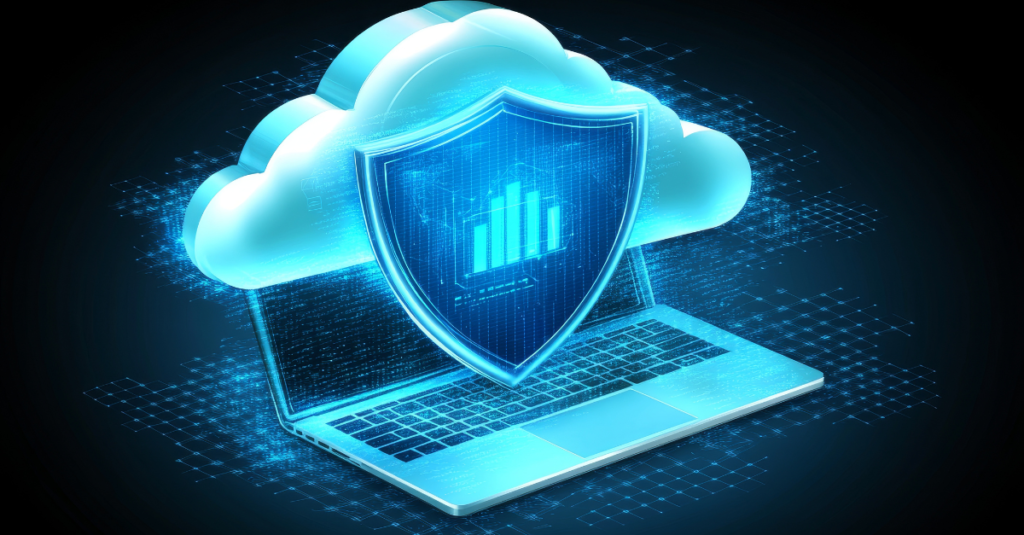How Cloud Security Protects Your Sensitive Information
Cloud Security is essential in today’s interconnected digital landscape to safeguard sensitive information and maintain trust in digital systems. As businesses increasingly rely on cloud services for data storage, the risk of breaches, leaks, and unauthorized access grows significantly. Cloud Security encompasses a range of technologies, policies, and practices designed to protect cloud-stored data and ensure compliance with security standards. It not only prevents cyberattacks but also ensures the confidentiality, integrity, and availability of data. Features such as encryption, identity and access management (IAM), and regular vulnerability assessments play a crucial role in maintaining a secure cloud environment.
To enhance your cloud security practices, start by implementing robust authentication protocols, like multi-factor authentication (MFA), to prevent unauthorized access. Regularly update and patch your systems to close potential security gaps. Encrypt sensitive data both in transit and at rest to safeguard against data breaches. Additionally, monitor your cloud environment continuously for unusual activity and conduct regular security audits to identify vulnerabilities. By adopting these measures, businesses can strengthen their defenses and reduce the risk of cloud-based threats. In an era where data is a vital asset, prioritizing cloud security is a necessity for organizations to thrive securely in the digital age.
Understanding Cloud Security

Cloud Security involves securing sensitive data, applications, and services hosted in cloud environments from unauthorized access, cyberattacks, and data loss. It includes various measures such as encryption, identity and access management (IAM), firewalls, intrusion detection systems, and multi-factor authentication (MFA) to ensure that cloud-hosted systems are protected. Since cloud providers manage much of the infrastructure, security becomes a shared responsibility between the provider and the customer. Cloud security also extends to disaster recovery, ensuring data availability even in the event of an attack or system failure. With the increasing adoption of cloud services, maintaining robust cloud security is critical to prevent data leaks, ensure business continuity, and comply with data protection regulations like GDPR or HIPAA.
Why is Cloud Security Essential?
The Risks of Poor Cloud Security
Without robust cloud security, organizations are vulnerable to:
- Data Breaches: Hackers can exploit vulnerabilities to access sensitive information.
- Compliance Violations: Failure to secure data could lead to hefty fines and legal issues.
- Operational Disruption: Cyberattacks can disrupt business operations, causing downtime and financial losses.
The Benefits of Cloud Security
Investing in cloud security ensures:
- Data Integrity: Protects data from unauthorized alterations.
- Confidentiality: Safeguards sensitive information from prying eyes.
- Availability: Ensures uninterrupted access to critical applications and data.
How Cloud Security Protects Your Sensitive Information
1. Data Encryption
Encryption is a cornerstone of cloud security. It ensures that data is encoded, making it unreadable to unauthorized users.
- At Rest: Data stored in the cloud is encrypted to prevent access during storage.
- In Transit: Information transmitted between users and the cloud is encrypted to protect against interception.
2. Multi-Factor Authentication (MFA)
MFA adds an extra layer of protection by requiring multiple forms of verification to access sensitive information. For example:
- Password: Something you know.
- Device: Something you have, like a smartphone.
- Biometrics: Something you are, such as a fingerprint.
3. Firewalls and Network Security
Firewalls monitor and control traffic between your network and the cloud. They:
- Block unauthorized access.
- Detect and neutralize suspicious activities.
- Safeguard against Distributed Denial of Service (DDoS) attacks.
4. Identity and Access Management (IAM)
IAM solutions enforce strict access controls, ensuring that only authorized personnel can access sensitive data. Key features include:
- Role-based access controls (RBAC).
- Regular audits to review and adjust access permissions.
5. Regular Security Updates and Patches
Cloud providers frequently release updates to address vulnerabilities. Staying up-to-date with these patches is vital to:
- Close security gaps.
- Protect against newly discovered threats.
6. Compliance with Regulatory Standards
Many cloud providers adhere to industry standards such as GDPR, HIPAA, and ISO 27001. These standards mandate robust cloud security measures to:
- Protect sensitive data.
- Maintain transparency and trust.
7. Threat Detection and Response
Cloud providers deploy advanced threat detection systems to identify and mitigate risks in real time. These systems:
- Use AI to detect unusual activity.
- Automate responses to minimize damage.
Best Practices to Strengthen Your Cloud Security
Educate Your Team
- Train employees on the importance of cloud security.
- Conduct regular workshops on identifying phishing attempts and securing personal devices.
Conduct Regular Security Audits
- Assess your cloud environment for vulnerabilities.
- Partner with third-party auditors to ensure compliance with standards.
Implement Data Backup Strategies
- Schedule regular backups to protect against data loss.
- Use encrypted backups stored in separate locations.
Common Myths About Cloud Security
Cloud Security is the Provider's Responsibility
While cloud providers implement robust security measures, end users also share responsibility. This includes:
- Securing login credentials.
- Implementing strong access controls.
The Cloud is Inherently Insecure
Modern cloud platforms offer advanced security features that often surpass on-premise systems. The key is proper configuration and monitoring.
Conclusion
Cloud Security is indispensable for protecting sensitive information in today's digital age. By leveraging encryption, multi-factor authentication, and threat detection systems, organizations can safeguard their data against evolving cyber threats. Adopting best practices and staying proactive will ensure your cloud environment remains secure and resilient.
Remember, cloud security is a shared responsibility. Whi

Comments
Post a Comment